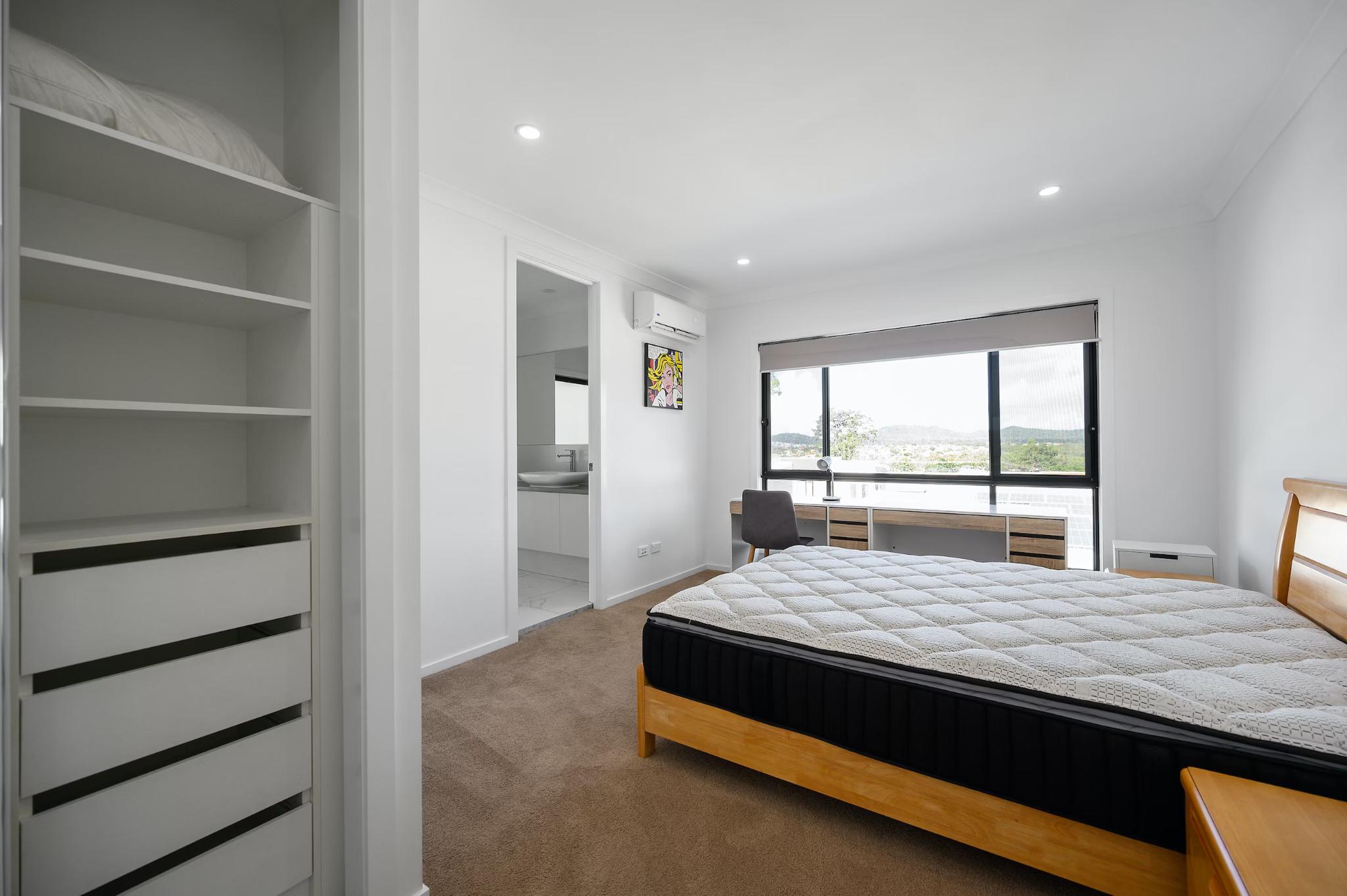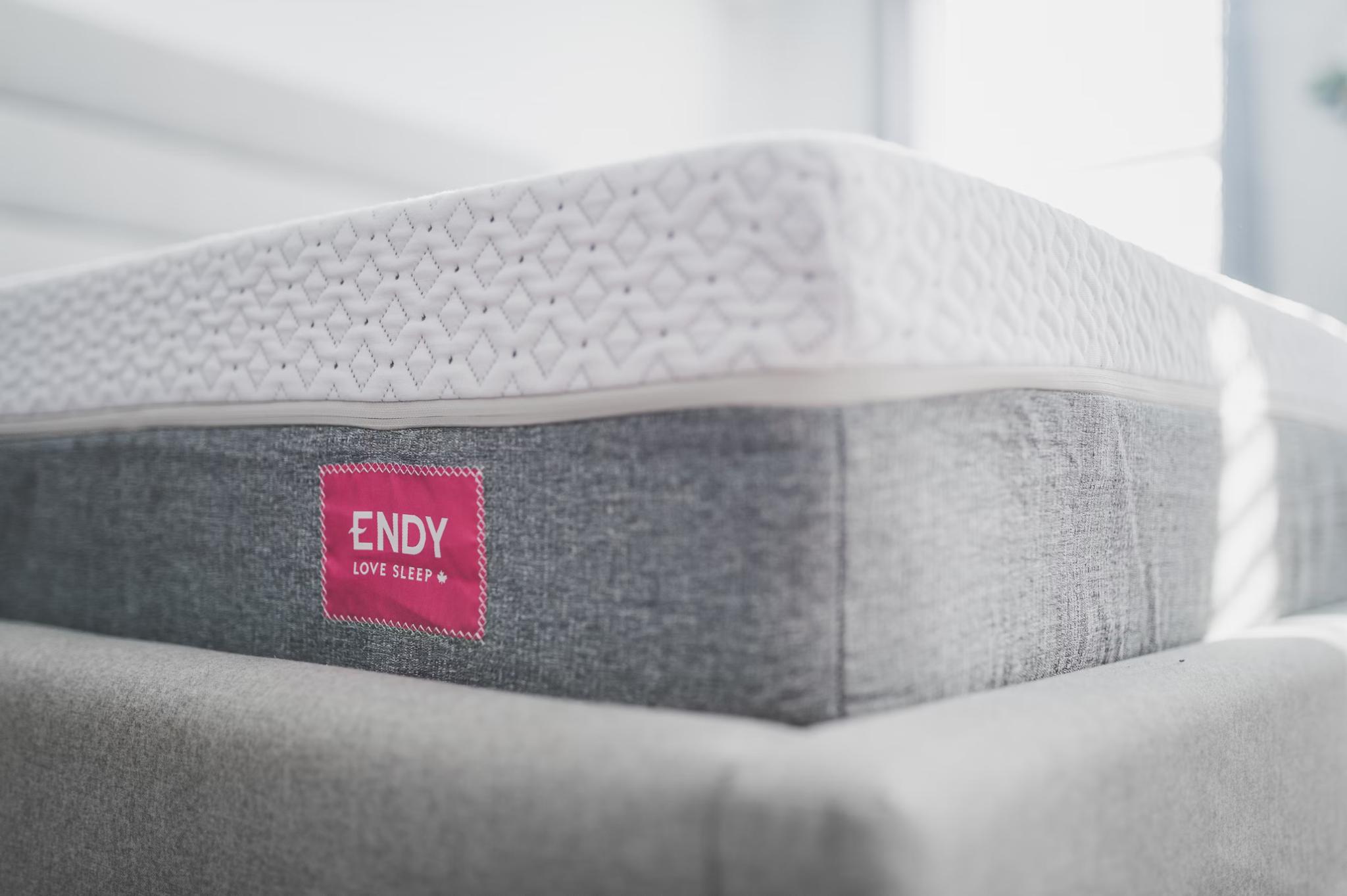How To Choose The Best Mattress For A Good Night’s Sleep
Want better sleep?
One key factor influencing the quality of your sleep is the mattress you choose.
Your choice of mattress plays a pivotal role in shaping the contours of your sleep quality, influencing everything from comfort to support and, ultimately, your overall well-being.
In this article, we’ll guide you through the process of selecting the best mattress for a restful night.
We’ll discuss the different mattress types, delve into the intricacies of firmness and support, and explore materials that stand the test of time.
By the end, you’ll be equipped with the knowledge to make an informed decision, paving the way for better sleep every night.
Step 1: Understanding Your Sleep Needs
First, let’s start off by assessing your personal sleep preferences.
Initiating the quest for your perfect mattress begins with an intimate exploration of your sleep preferences.
If you think about it, each person’s sleep journey is as unique as a fingerprint.
To start, reflect on your favourite sleeping posture – do you curl up on your side, stretch out on your back, or find comfort nestled on your stomach?


Understanding these preferences lays the foundation for a tailored sleep experience.
If you’re a side sleeper, you may experience pressure points around your hips and shoulders. Here, a mattress with a softer comfort layer can alleviate these pressure points and provide better spinal alignment.
On the other hand, back sleepers might benefit from a mattress with medium firmness to support the natural curvature of the spine.
Once you’ve identified your favourite sleeping posture, consider health conditions or specific requirements as well.
If you struggle with back pain, especially in the lumbar region, opt for a mattress that provides targeted support. Memory foam or hybrid mattresses with enhanced lumbar support can alleviate pressure on the lower back, promoting a more comfortable and pain-free sleep.
If you have allergies, prioritize mattresses with hypoallergenic materials.
Here, look for options resistant to common allergens like dust mites. Additionally, consider mattress protectors and covers to create a barrier against allergens, ensuring a healthier sleep environment.
What about if you have chronic conditions such as arthritis?
In this scenario, you may benefit from a mattress that offers both support and pressure relief. Memory foam mattresses or those with specialized comfort layers can conform to the body’s contours, easing discomfort associated with chronic conditions.
Step 2: Understanding Different Mattress Types
Understanding the diverse landscape of mattress types is key to finding the perfect fit.


From traditional innerspring designs to innovative memory foam, latex, hybrid models, and adjustable airbeds, each mattress type offers distinct features that cater to various sleep preferences and requirements.
Innerspring mattresses
First, there’s innerspring mattresses, which are constructed with a core support system made of metal springs or coils.
The support they offer depends on the number and gauge of the coils, and they often have a comfort layer made of materials like foam or fiber on top of the springs.
Innerspring mattresses are known for their good airflow, which can help with temperature regulation during sleep.
They’re generally more responsive and offer a traditional bounce, but they may not provide as much contouring or pressure relief as other types.
PS: In the past, innerspring mattresses were the go-to choice for most households.
However, with advancements in mattress technology and changing consumer preferences, their popularity has declined.
While they still have a presence due to their affordability, newer mattress types like memory foam, latex, and hybrids are now more comfortable with consumers, because they offer more support.
Memory foam mattresses
Next, memory foam mattresses are made from a viscoelastic material that softens when it comes into contact with body heat, allowing it to conform to the sleeper’s body shape.
This material is excellent for pressure relief and can be beneficial for those with joint or back pain.
Memory foam mattresses absorb motion, making them a good choice for couples if one person tends to move around during sleep.
However, some people may find them too warm due to their heat-retaining properties.
If you’re one of these people, look for memory foam mattresses that have cooling gel-infused foams and improved airflow designs.
These advancements aim to counteract the heat retention commonly associated with traditional memory foam: the cooling gel helps dissipate body heat, while enhanced airflow allows for better ventilation, addressing the warmth issue that some individuals experience.
Additionally, consider mattress covers or toppers specifically designed to regulate temperature.
Opting for breathable bedding materials, such as cotton or bamboo-derived fabrics, can also assist in managing the heat buildup often associated with memory foam mattresses.
Latex mattresses
Latex mattresses, whether made from natural or synthetic latex foam, offer a responsive and lively feel similar to innerspring mattresses.
They provide excellent contouring and pressure relief without the sinking sensation commonly found in memory foam.
Additionally, natural latex is hypoallergenic and resists dust mites and mold, making it an ideal choice for allergy sufferers.
These mattresses also tend to sleep cooler than memory foam options, contributing to a more comfortable sleep experience.
However, their quality and durability come at a higher price point compared to other mattress types. Despite this, their long-term resilience often justifies the initial investment for those prioritizing lasting comfort and support.
Hybrid mattresses
Hybrid mattresses combine the best of various materials, typically pairing an innerspring support system with layers of foam or latex. This unique construction aims to provide sleepers with a balanced feel that caters to a wide range of preferences.
One of the primary advantages of hybrid mattresses is their ability to offer both support and comfort.
The coil support core provides sturdy reinforcement, while the comfort layers, often made of memory foam, latex, or other materials, offer contouring and pressure relief. This blend aims to mitigate the downsides of individual materials by combining their strengths.
Due to their versatile design, hybrid mattresses tend to suit different sleep styles, accommodating side, back, and stomach sleepers alike.
They’re particularly beneficial for individuals seeking a middle ground between the traditional bounce of innerspring mattresses and the contouring comfort of foam or latex.
However, the quality and comfort of hybrid mattresses can vary significantly depending on the specific materials used in their construction.
Some hybrids may still transfer more motion than pure foam mattresses, a consideration for couples or light sleepers.
Moreover, the price range for hybrids can also be quite diverse, with higher-end models featuring more premium materials and consequently a higher price tag.
Overall, hybrid mattresses aim to strike a balance between support, comfort, and responsiveness, making them a popular choice for those seeking a mix of traditional and modern mattress features.
Innerspring, memory foam, latex and hybrid mattresses: Pros & cons
Now that you’re clear on the different types of mattresses, we’ll summarise the pros and cons of each mattress, so that you can keep these in mind.


Innerspring mattresses:
Pros:
- They offer good support, especially for those who prefer a firmer sleep surface.
- Enhanced airflow between coils helps regulate temperature during sleep.
- Often more budget-friendly compared to other types of mattresses.
Cons:
- They tend to transfer motion, which might disturb partners.
- They might not provide as much pressure relief or body contouring as foam or latex mattresses.
- The springs may wear out or become noisy over time.
Memory foam mattresses:
Pros:
- Excellent for contouring to the body and alleviating pressure points.
- Absorbs movement, allowing for undisturbed sleep for couples.
Cons:
- Can retain heat and sleep hot due to the material’s heat-absorbing nature.
- Some individuals might feel they sink too deeply into the foam.
Latex mattresses
Pros:
- Known for their long lifespan and resilience.
- Offer both pressure relief and support, conforming to the body without sinking too much.
- Natural latex mattresses are hypoallergenic and resistant to dust mites and mold.
Cons:
- Can be relatively expensive, especially for natural latex models.
- Latex mattresses tend to be heavier and might be difficult to move.
Hybrid mattresses
Pros:
- Combines the benefits of different materials, providing both support and comfort.
- Available in various configurations, catering to a wide range of sleep preferences.
Cons:
- Depending on the materials used, hybrids can be more expensive.
- Quality can vary widely depending on the specific design and materials used.
Firmness and support
The firmness of a mattress plays a pivotal role in determining sleep comfort. It directly impacts how well your body is supported and whether pressure points are alleviated or exacerbated during sleep.
So, here’s the golden question… how do you find the right balance between a mattress that is too firm or too soft?
As mentioned previously, different sleep positions require varying degrees of firmness to maintain proper spinal alignment and comfort.
Side sleepers
If you like to sleep on your side, a medium to medium-soft mattress might be your ideal choice.
This firmness level cushions the shoulders and hips, crucial areas that often bear the brunt of pressure while sleeping on one’s side.
By conforming to the body’s contours, this level of softness allows for proper alignment, preventing discomfort and maintaining a more natural posture throughout the night.
Back sleepers
For those who prefer sleeping on their back, a medium-firm mattress tends to be the sweet spot.
This level of firmness provides adequate support to maintain the natural curve of the spine without allowing excessive sinking. It distributes weight evenly, ensuring that the spine remains aligned and supported throughout the night.
Stomach sleepers
Stomach sleepers often require a firmer surface to prevent excessive sinkage, particularly around the midsection.
A mattress with more firmness helps prevent the back from arching excessively, reducing strain on the lower back and promoting better spinal alignment.
Finding the right firmness level based on your preferred sleep position ensures that your mattress properly supports your body, reducing pressure points and potential discomfort. This understanding of how different positions impact your body’s alignment is key to selecting a mattress that caters to your specific needs for a restful night’s sleep.
Trying Out Mattresses In The Store
Testing mattresses in-store offers a firsthand experience crucial to finding your ideal sleep surface.


Here are some tips to keep in mind when you’re trying out mattresses in a store.
First, check the edge support.
Sit or lie near the edge of the mattress to gauge its stability. A mattress with good edge support ensures you can utilize the entire surface without feeling like you might roll off.
Next, lie on the bed and check for noise and motion transfer.
Ensure the mattress doesn’t produce excessive noise when you move. Assess its ability to isolate motion, especially if you share the bed with a partner.
Next, assess the comfort level of the mattress.
Lie down in your typical sleeping position to assess how the mattress feels. Pay attention to the initial comfort level and how your body reacts after a few minutes.
Check to see if the mattress offers support without causing uncomfortable sinkage.
Remember, a good mattress should alleviate pressure on sensitive areas like shoulders, hips, and lower back.
Buying Mattresses Online
In Singapore, there are several brands that offer the convenience of purchasing mattresses online and having them delivered right to your doorstep.


While some of these brands have physical showrooms that allow you to test their mattresses in person, others operate solely online, meaning you’re making a mattress purchase without the benefit of trying it out beforehand.
For brands without showrooms, the prospect of buying a mattress without having seen or felt it before might seem daunting.
However, many of these online retailers compensate for the lack of physical testing by offering extensive trial periods, some as lengthy as 120 nights. This generous trial period allows you to experience the mattress in your own home and gauge its comfort and suitability for your sleep needs.
Many of these online mattress retailers also come with plenty of positive reviews, which offer assurance based on the experiences of other customers.
Plus, there’s the fact that the online brands are priced a lot more competitively than what you’d get from a retail store.
Should you buy a mattress online? If you ask us, it’s perfectly fine – just make sure you read the T&C thoroughly and understand the details of the trial period and return policy before you buy!
A Final Word On How To Choose The Best Mattress For A Good Night’s Sleep
By delving into the nuances of mattress types, sleep preferences, and the considerations of testing in-store or purchasing online, you should now be able to make a well-informed choice.
Remember, a mattress isn’t just a purchase; it’s an investment in your well-being.
By leveraging the knowledge gained here, you can now select the perfect mattress—one that aligns with your unique sleep preferences, ensuring nights of rejuvenating and blissful sleep for years to come.
Want to check out home renovation projects for more inspiration? Browse home renovation projects on Hometrust, or click the button below to get connected with expert designers!
Renovating soon? Let Hometrust recommend the best interior designers.
If you are reading this, you are probably wondering how you can create your dream home.
Here’s the thing, everyone’s needs and requirements for their home renovation is different. A designer that may work for someone else, may not quite work for you.
At Hometrust, we’re here to help match top rated designers, recommended by past homeowners to you through our data-driven and matching algorithm.
Whether you are looking for partial renovation or a full fledge overhaul, we’ll be able to recommend you top designers to match your renovation requirements and lifestyle.
Recommendations and free and you can simply start by helping us understand your needs below!
Get RecommendationsRenovate safe!
The Hometrust Team



